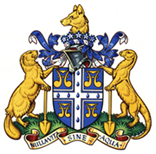Our journey to become a Worshipful Company
Today’s piped water distribution network is the product of the last two centuries. For at least five centuries prior to that the vital task of water distribution was largely a manual job. This involved not only housewives and servants but also full-time water-bearers carrying heavy loads of water in large tankards through city streets.
In 1496 these tankard bearers in the capital petitioned to form themselves into a Fraternity – the Fellowship of the Brotherhood of St Christopher of the Water-Bearers of the City of London. Their trade being essentially manual, they never became a Livery Company, but they were nevertheless an organisation that represented and regulated the operation of water-bearers in the City for well over 200 years until the advent of commercial water companies led to their gradual decline.
From the 19th century three institutions emerged to regulate the professional side of the water industry: the Public Health Engineers, the Institution of Water Pollution Control and the Water Engineers and Scientists. In 1986 these institutions merged to create the Institution of Water and Environmental Management (IWEM). Two years later the decision was taken to form a Guild to further enhance the profession. In 1994 the Guild was recognized by the City of London and became the Company of Water Conservators. On 1st January 2000, the Worshipful Company of Water Conservators became 102nd Livery Company of the City of London. In 2005 the company was incorporated by Royal Charter; a long journey from those humble fraternal origins in 1496.
Today, the Company is manged by a Court consisting of the Master, the Thames, Fleet, and Walbrook Wardens (who each hold office for one year and are elected from the ranks of the Court Assistants), together with selected Court Assistants and Past Masters. The day-to-day running is carried out by the Clerk, a salaried official, supported by the Beadle on ceremonial occasions.






